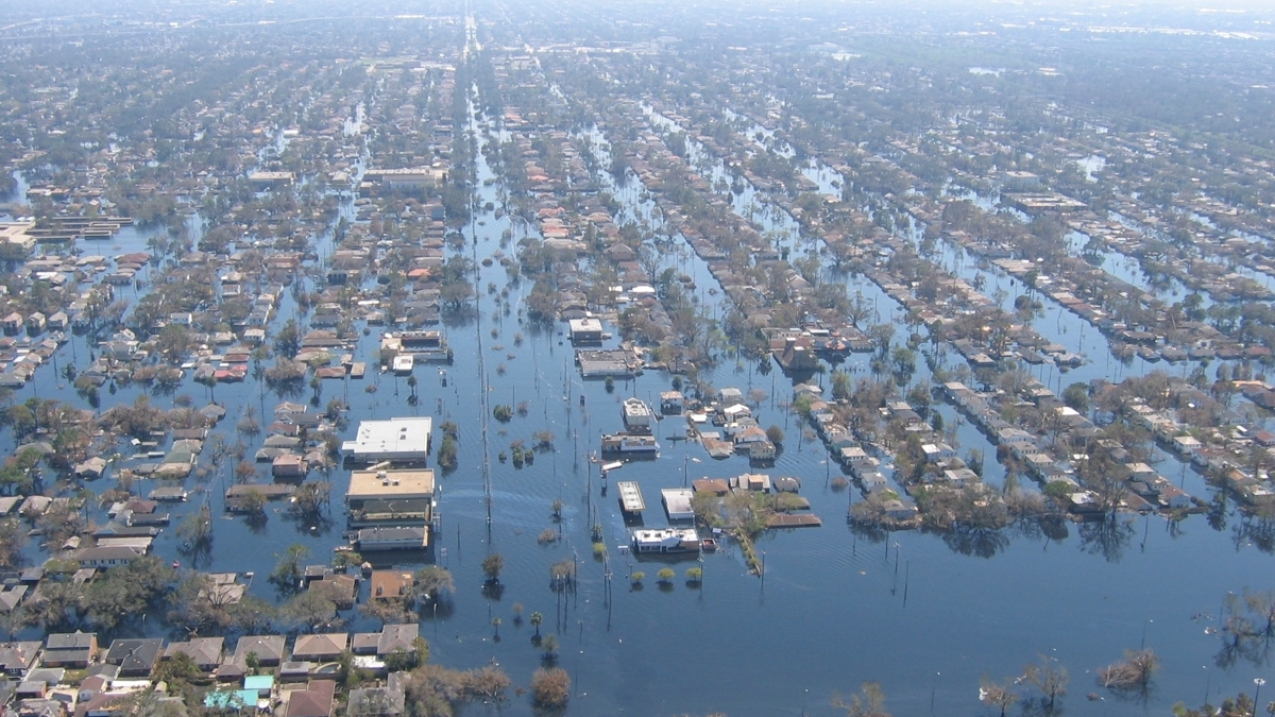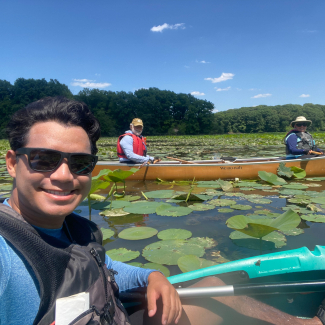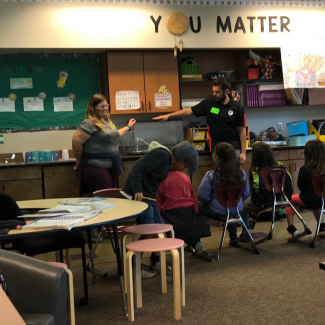Look around you, right now — you are in a watershed.
The water in your watershed quenches thirst, grows food, washes clothes, and powers industry. However, too much water can cause raging floods and flush pollutants and soil into rivers and streams. How do we interact with the water in our watershed?

Inundated New Orleans in aftermath of Hurricane Katrina (Image credit: Mark Moran/NOAA)
Water forecasts and management
Cities, utilities, reservoir operators, agriculture, and other industries depend on accurate forecasts of water availability. Hydrologists (water-system scientists) use snow data, river gauges, evaporation rates, precipitation forecasts, radar, and other data to produce forecasts that allow water managers and others to plan efficient and safe use of this natural resource.
Water managers use this information to make decisions about water allocation, such as how much water should be released from a reservoir during spring runoff. These decisions can reduce flooding threats, limit the impact of droughts, and influence fish migrations. Cargo ship and barge captains on large rivers use information on the current and forecasted river level, and flow rate for navigation. Hydroelectric dam operators use similar information to produce electricity efficiently. Fishermen, whitewater paddlers, others who use water recreationally use these river predictions to plan safe outings.
A NOAA intern's project focused on the potential impact of animals on the amount of nutrients in Old Woman Creek estuary to investigate links between wildlife conservation and water quality goals in Lake Erie coastal wetlands.
Watersheds and flooding
When water enters the watershed too quickly for the land to absorb it, flooding can occur. Floods can result from rapid melting of winter snows, severe thunderstorms, tropical storms, and other precipitation events. In the United States, flooding causes billions of dollars in damages and takes dozens of lives every year.
Accurate river flow forecasts have saved countless lives and millions of dollars. Hydrologists, the forecasters who predict these events, consider the condition of the watershed and its relationship to the rest of the water cycle. Watersheds in urban areas with lots of concrete, pavement, and roofs, shed water quickly, while forested and grassy rural areas absorb more water. Accurate flooding forecasts rely on an understanding of land use, geology, and hydrology of an area, combined with weather predictions.
Where does marine debris originate, and how does it make its way to the ocean? There are many possible avenues for land-based trash to become marine debris.
Runoff and pollution
Scientists and environmental managers break pollution into two categories: point source and nonpoint source pollution. Direct contamination of waterways, such as industrial waste pouring from a factory drain into a river, is an example of point source pollution. Pollutants such as motor oil leaked on parking lots, plastic grocery bags, pesticides, fertilizers, detergents, and sediments are known as nonpoint source pollutants.
Stormwater runoff from nonpoint source pollution is one of the most significant threats to aquatic ecosystems in the United States. As water runs over and through the watershed, it picks up and carries contaminants and soil. If untreated, these pollutants wash directly into waterways carried by runoff from rain and snowmelt. These contaminants can infiltrate groundwater and concentrate in streams and rivers, ultimately being carried down the watershed and into the ocean. Nonpoint source pollution is linked to the formation of large dead zones (areas with minimal oxygen) in the ocean and also threatens coral reef ecosystems around the world.
EDUCATION CONNECTION
Learning about watersheds can help students develop understanding and appreciation for the relationship that we have with our environment. Some resources in this collection encourage educators to get students outside to observe their local ecosystems firsthand. Others provide data, hands-on activities, and examples to help students understand how stewardship skills can help protect water resources and the environment for the future.



